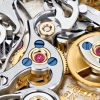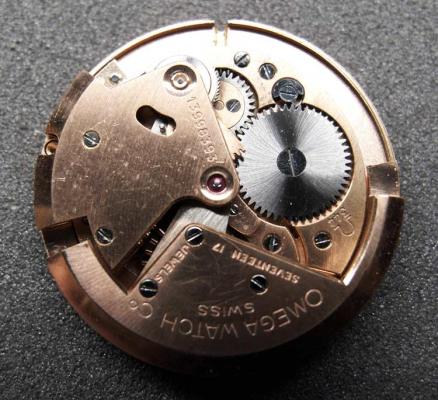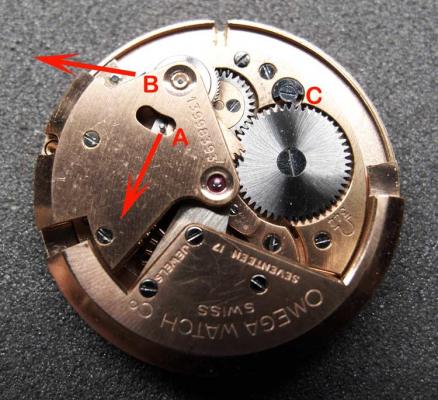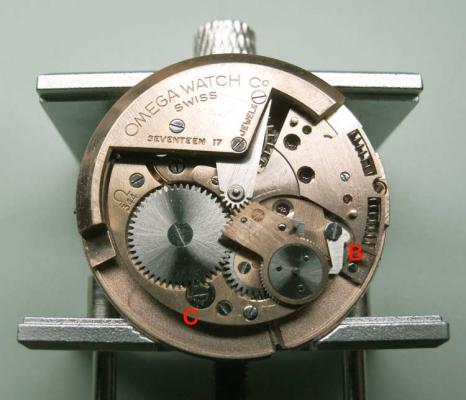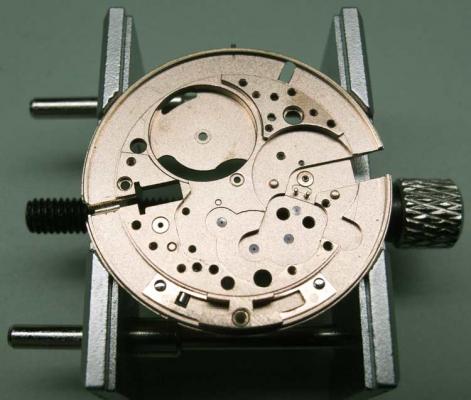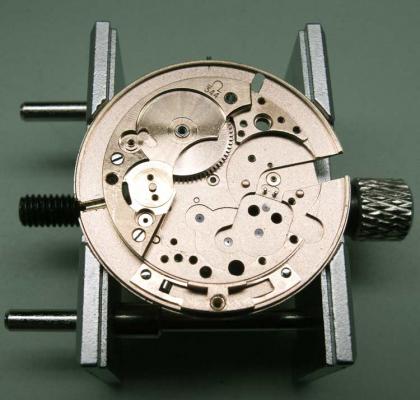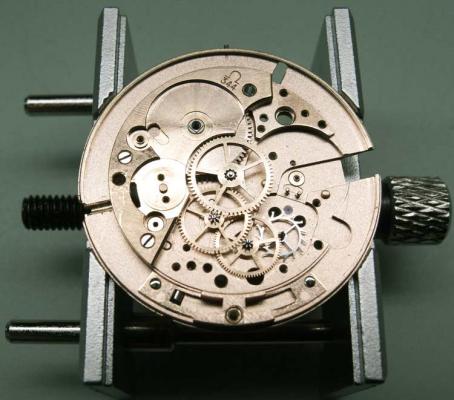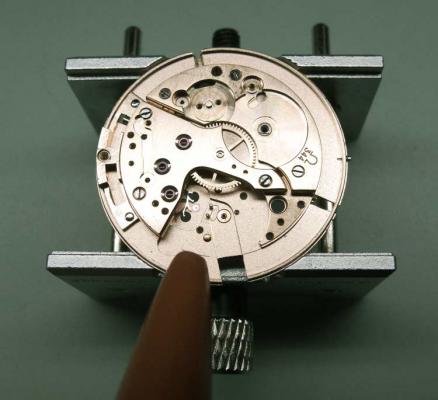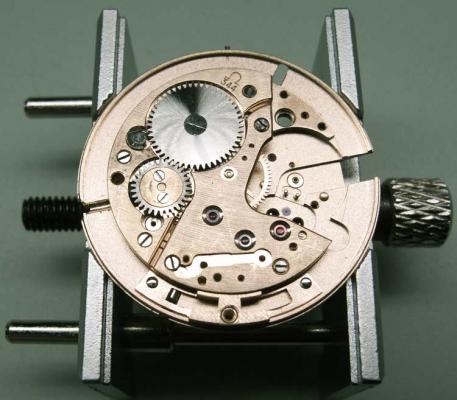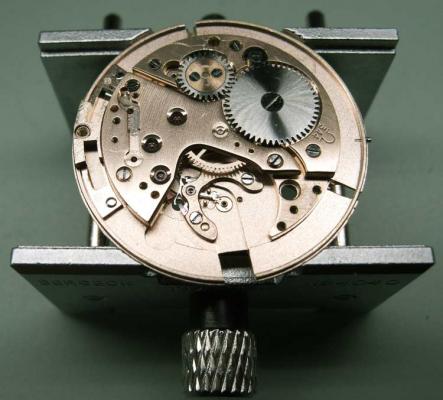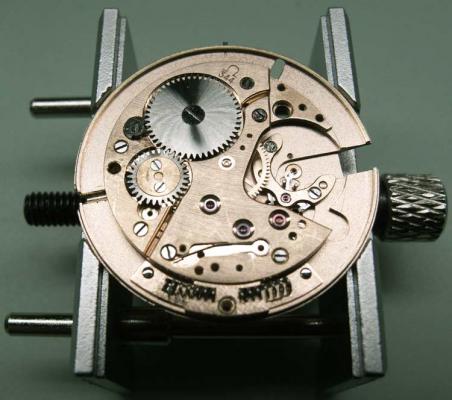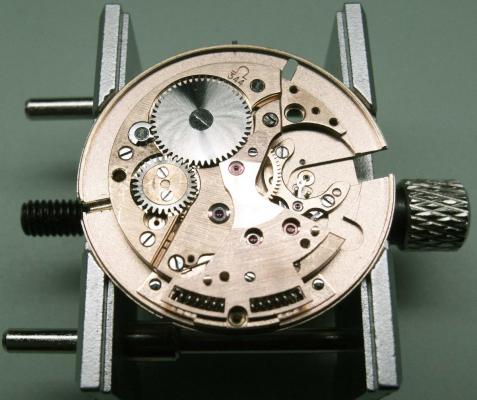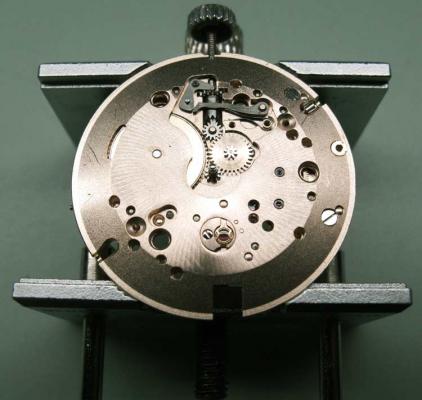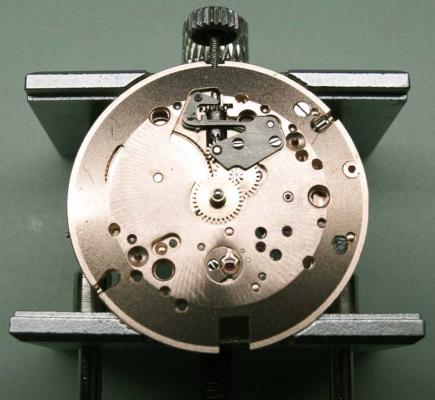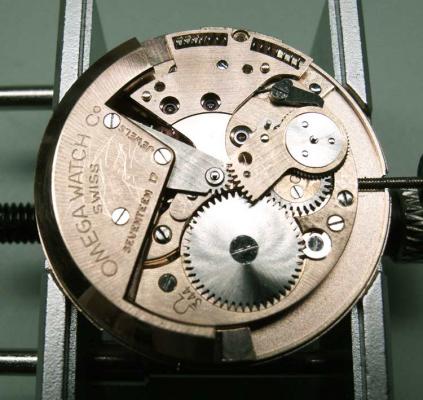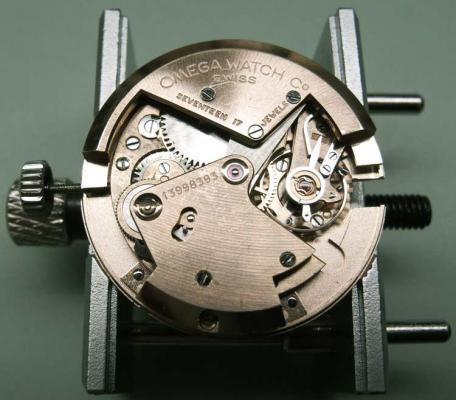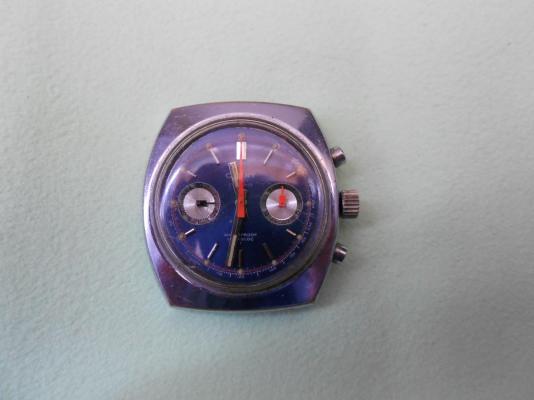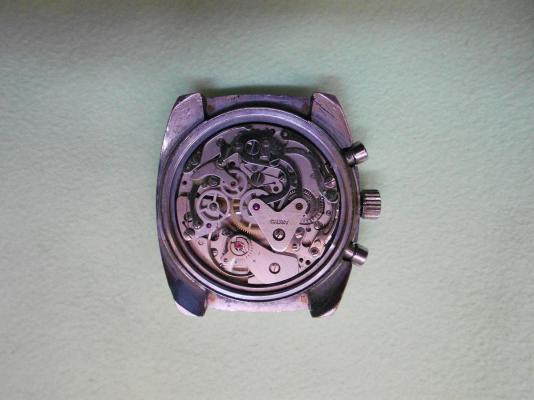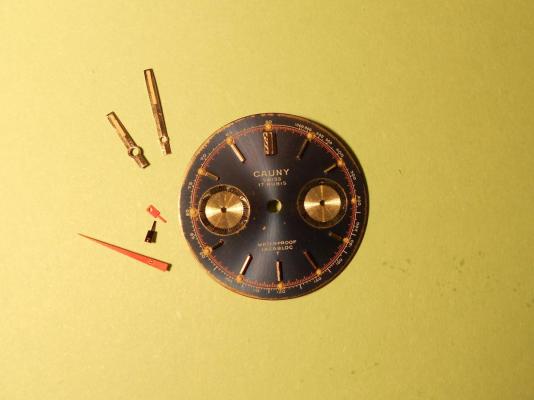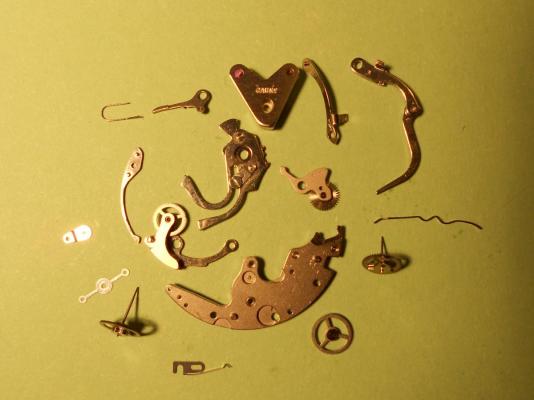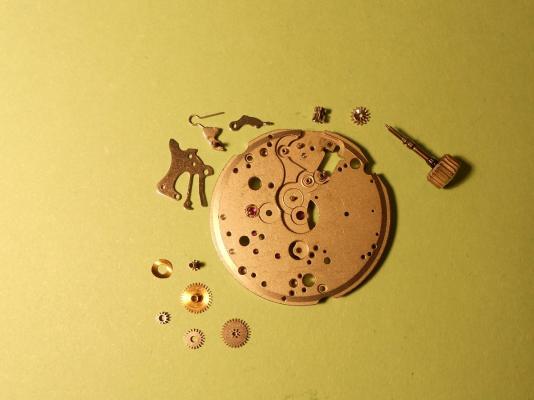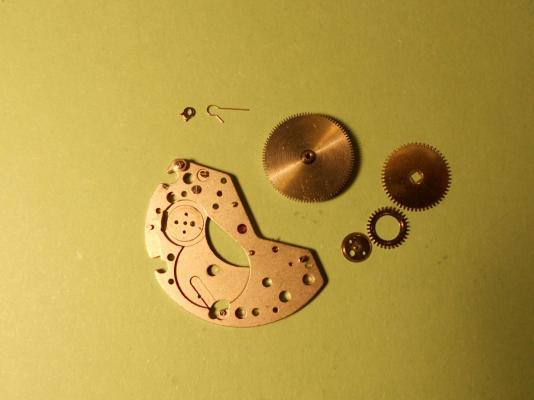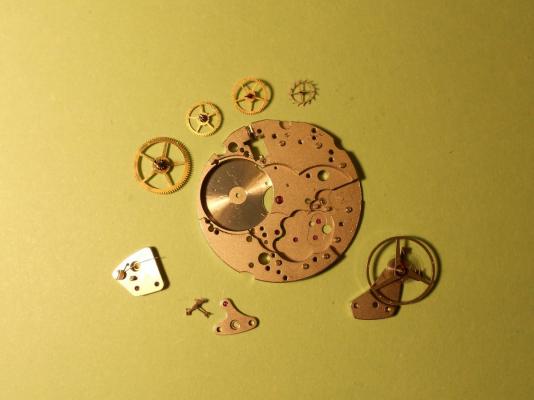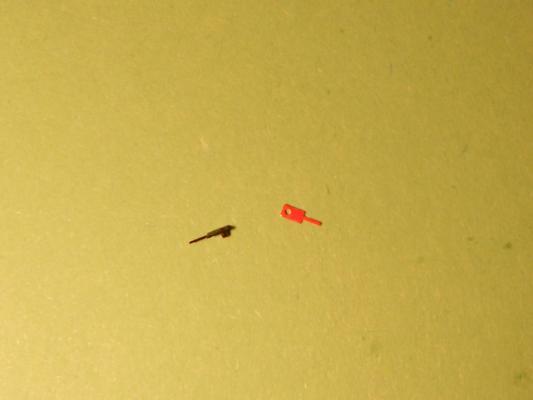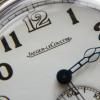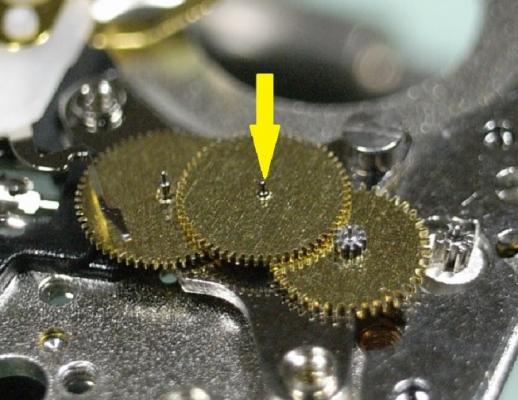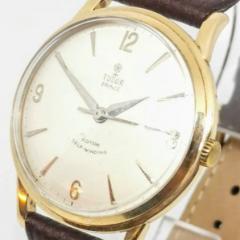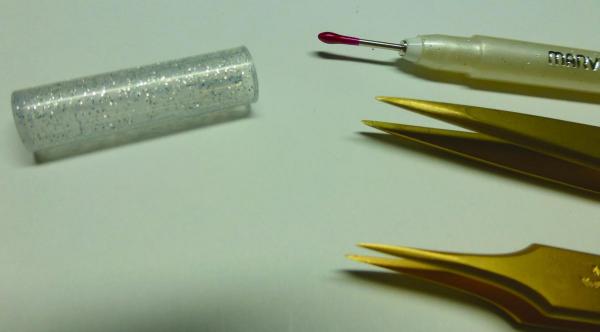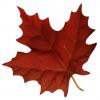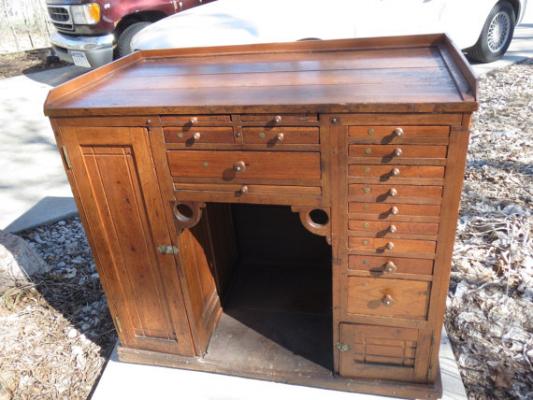Leaderboard
Popular Content
Showing content with the highest reputation on 07/28/15 in all areas
-
oldhippy......thats why I have a missing persons list on my table, when I find a part I can usually trace where it came from. Anil3 points
-
my preferred watches are the the chronographs due to the extra complexity of the repairs and the calibration. I had a sort out and realised that i have tons of stuff! Need to start using some of this stuff once i sorted out whats from a Valjoux, Landeron or a Venus! Thought id show some pictures, because my other half was not impressed at all!2 points
-
Here is an insight into the rebuilding of an Omega Seamaster bumper automatic 344 calibre movement from 1952. I am not going to give a step by step dismantling procedure. Apart from the auto-wind mechanism, the dismantling is fairly standard. I will however give a couple of tips on how to safely remove the auto-wind mechanism, before showing assembly of the cleaned movement. The Omega bumper mechanism has three clicks A, B & C. The first A is mounted on the ratchet lever and transmits force to the ratchet gear during winding. It also allows the ratchet gear it to index in one direction only. The driving force is produced by the oscillating weight and transmits force to the lever via a curved rack on the end of the lever. The second B is mounted on the Train Bridge and ensures the ratchet gear is held stationary when the ratchet lever moves anti-clockwise to the starting position of its clockwise winding stroke. Click B is holding the force of the mainspring during normal use. The third C is the barrel ratchet click. This is only really required to hold mainspring pressure when the auto mechanism is removed during disassembly. Disassembly Procedure When dismantling the watch movement the mainspring pressure must first be removed from the auto mechanism. Once this is done the auto bridge can be safely removed. To do this release both click A and click B to remove all mainspring force from the auto mechanism. This is done by pulling the clicks clear of engagement in the direction of the red arrows. The mainspring pressure will now be held by click C. Once this has been done the auto-wind bridge can safely be removed. This reveals the lever and ratchet assembly that can now be lifted from the movement. At this stage the mainspring pressure can now be completely released in the normal way. Use a screwdriver to control the rate of barrel rotation while holding click C clear of the ratchet wheel. Dismantling from here on is much the same as any other manual wind watch. Reassembly Attach the Bumper Spring Retaining Plate (at bottom of picture). Fit barrel and Barrel Bridge. Fit the Gear Train and Bridge. Blow the perifery of the escape wheel toensure free running of gear train. Fit the Crown Wheel & Ratchet Wheel. Fit the Escapement lever and Bridge Fit Bumper Springs and Retaining Bridge. Fit Keyless Work. Fit Auto-wind Mechanism. Ensure that the automatic lever is engaged to allow full travel of the rotor. The rotor should bounce of each spring at the end of its travel. If it doesn't, damage will result. Finally fit Auto-wind Bridge and Balance Assembly That’s all folks! PS. The new LED light from Cousins has greatly improved my pictures. Now shooing at handheld at 200ASA instead of 800ASA.1 point
-
As I told in my introdoctury post, I had decided to give a (big) step further in my short watchmaking hobby experience, servicing a Cauny Chronograph that I own since 1969 and that rested (but not forgotten) in my watches box: First came out hands and dial...: then the chronograph module...: the keyless and motion work...: barrel bridge...: basic module...: So everything ready for a good cleaning! I only had a (little/big?) problem on disassembling: when pullling the chronograph minute recorder hand, it came off without the (so!) little "cylinder pipe" that goes on the wheel chronograph pivot, to which it rested firmly attached! It only came off when I take off (from the other side of the plate), and with some effort, the minute recorder wheel. Unfotunately when I was trying to see if it was possible to attach it again to the hand, it decided to "fly away", and I could not find it yet, and I suppose never will. So probably when I'' finish to assemble the watch I'll have one hand that doesn't "hook" in its pivot. Your suggestions wll be most welcome!! Thanks! in this photo you can see the "injured" hand together with its "healthy" subsidiary seconds "cousin":1 point
-
Some nice watches ( and clock ;) ) getting some love here on wrt. Thanks for the compliment clockboy :) Just finished another two repairs/services, both suffered with destroyed balances but both back in action. Omega 1953 RAF / Calibre 283 ( Customer Job ) & Omega SeaMaster 1956 / Calibre 420 ( One of my own ) The Omega RAF had a nasty drop from quite a height which smashed the crown clean off and of course did not fair well for the balance too much either. The Seamaster was more of a disastermaster but after a good few weeks of graft i think she looks respectable again. Now im awaiting a Breitling which needs some tlc , im quite looking forward to it as ive never owned one before and it would be nice to have at least one in my collection :) The Hema chrono looks really good, i must get me a few scrappers to play with after seeing that little gem :)1 point
-
If you mean me (Rob) and not Geo [emoji6] [emoji1] thanks. Looking for a solid link bracelet as this one is a really cheap folded metal no name brand. Centre lug is 10mm wide and the case is 29mm wide.1 point
-
Hey Douglas The most import advise I can offer is taking time to position the rotor and wheels. If you look at the picture of rotor and wheels that I took, they are seated very carefully to be as aligned as possible before fitting the bridge. Once you've got the rotor and wheels positioned as pictured, carefully place the bridge on top, and hold it down gently on top with a piece of pegwood. Then with a fine pair of brass tweezers (#4 or #5) or an oiler, gently "worry" the wheels and rotor into their jewels whilst holding the bridge down with the pegwood. "Worrying" means moving them slightly back and forth Also if your bridge has become magnetized, you will have to de-magnetize it. A de-magnetizer is an essential piece of kit, and are very cheap on ebay ... I purchased mine for about $20.00. Never put parts into a cleaner without de-magnetizing all the parts.1 point
-
Found it a little tricky as well. Had to partially insert the screws to hold the Stator in place to counteract the magnetic attraction. When encouraging the wheel pivots into the bridge jewels, a thinned down plastic floss stick came in handy to keep the rotor in it's lower jewel. Once wheel bridge in place, I then removed the screws I'd use to hold the Stator in place. Took me a while but worked for me. NAD1 point
-
1 point
-
I wish I could help you Jim, but this is one I have never seen never mind come across. You do get ten out of ten for the best description of losing a part yet, it describes my reaction when this happens perfectly! Just as an aside, I haven't lost a jewel cap or retaining spring since I started using a jewel "Picker Upper".1 point
-
Good question :) I have this saved on my computer and i printed it out on the printer . Have you guys and girls seen it before ? .http://www.bhi.co.uk/Documents/certificate/Tech/PractLub.pdf1 point
-
Hi George, please don't take this the wrong way, but for this type of finishing a Dremel is not really the way to go. Can I suggest that you purchase some sheets of wet or dry carborundum paper that is used by car painters. The grades to get are 600, 800 and 1200 grit. You should also purchase a small square of plate glass 150mm x 150mm about 6 to 8mm thick. You will also need a good quality metal polish and I recommend Solvol Autosol and a silver polishing cloth which you can buy through eBay if required. What you are after is a really flat finish on the the bridge. To get this take a piece of 600 grit wet and place it on the piece of plate glass and now rub the bridge on the paper in a straight back and forward motion with firm downward pressure. Keep doing this until any scores and scratches are removed and you are left with straight line graining. This finish itself can look very pleasing. Continue this process with the 800 and 1200 grit to the point where the brass is starting to take on a dull shine with this process. Before going onto polishing, take a well worn piece of 1200 paper and rub it with another piece of 1200 paper to reduce the sharpness. Now rub the bridge back and forth on that and it will start to shine. The final black polish is achieved by taking a piece of A4 White printing paper and place that on top of the plate glass, and smear some metal polish on it. Now continue to rub the bridge back and forth until you obtain the shine that you want. Finish off by placing the silver polishing cloth on the glass and rub the bridge on it to get the final lustre. This takes a bit of time but the results are well worth the effort!1 point
-
Just finshed the square watch here the rest of the photos. Outline. and then chipping away the glass photo can be seen aboved. ended up having to start a new one since i over cut one of the corners. Over all this took a good bit of time, about 5 broken crystals but being that this was my first time doing custom crystal i think over all it came out well, happy to put my name on this and return it to the customers. with more pratice i hope to do this much quicker. and maybe someone will have some tips or others tools i'll be able to use to make it quicker. As a side not how much does this type of work normally cost? Currently im charging 45$ CAD retail for this.1 point
-
See what happens? You rub the magic lantern and Dr Rock appears...! :) Tremor, as we call it (a.k.a. The Shakes), has multiple causes, as you allude to in your post, Lawson. And you're quite correct that some are due to pathological processes while others aren't. The main worries are tremors caused by a disease process (eg Parkinsons, and many other neurological disorders, hyperthyroidism, and several others). They need to be seen to and fixed where possible or at least controlled. And of course, in the worst cases, when the tremor CAN'T be controlled, then the decision has to be made about giving up the delicate work. But for all the other tremors, there are several considerations. First - some people have a hereditary condition known as Benign Familial Tremor - I have a surgeon colleague who has this quite markedly - yet, I'd let him operate on me. He deals with it by timing his deliberate movements to coincide with the tremor - it took years of practice, but he does some amazing fine surgical work and is also a very fast operator due to the speed of his movements. Assuming you don't have that condition, though, the main problem for most people is twofold - either a systemic problem (eg too much caffeine - tea, coffee, cola drinks, energy drinks, etc) or a problem known in the medico trade as an intention tremor. Intention tremor is similar to what was described by the original poster - the closer you get to the target point of your movement, the worse the tremor gets. Various things can be done to control this, including relaxation techniques (the whole breathe out thing that snipers use), take drugs such as certain types of beta blockers (one of the oldest is still one of the best - propranolol, trade name "Inderal"). This has been the mainstay of various professional musicians and performers for decades, and you'll need a prescription to get them, but they do work very well with minimal side effects as long as you tell the quack what you need them for, and that he/she checks any other conditions you may have, other medications etc. Also, mild calmatives such as diazepam in very small doses can work wonders (diazepam - "Valium" - but they no longer make the original Valium brand, but plenty of generics available). Again, get a prescription from your friendly quack for these. And I stress - TINY doses. (eg 2.5mg in the morning - that's half a 5mg tablet). One thing that we surgeons learn when doing extremely delicate work, especially when magnified by high-power loupes or a microscope, when every movement is magnified and looks like an earthquake, is to use the same technique that signwriters and artists may use. Place something (either another instrument, or for watch work, perhaps a small toothpick) held in your non-dominant hand with its tip down on the work somewhere very close to where you will be working (eg next to the screw hole). Gently brace that against the work, held between two fingers and thumb of the non-dominant hand. THEN gently rest your screwdriver, forceps, or whatever you're using as a tool, against the lower end of that sloping stick to steady the tip. If you've seen signwriters using those, a stick in one hand with a rubber ball on the end of it, then resting their hand or paint brush against the stick close to the sign they're writing, you'll get the idea. I think signwriters (and other artists) call it a mahl stick, or a maul stick. Watchmakers (and surgeons) can use exactly the same principle. The use of a toothpick or whatever, tip placed close to the point of action and instrument gently laid on it, would fit with Lawson's "Anchor point" principle. And remember - cut out the caffeine. There's more in a cup of tea than you may think. And while not wanting to rain on the parade of having a quickie drink, alcohol can actually make a tremor worse. I do some very delicate surgery, and I don't drink alcohol at all, I have one cup of decaf coffee in the morning (maybe) and no other caffeine at all. No tea, no real coffee, no Coke, and certainly none of those energy drinks. I also am very relaxed and confident in what I do, which helps the steady hands. But as we get older, the unwanted tremor - which goes by the ironic name of "essential tremor" - gradually can creep in. In that case, the propranolol, the diazepam, etc can help, along with the use of an improvised maul stick. Hope that helps :)1 point
-
Hey DJT2, I have looked into the reasons why we shake, and solutions to it ... yes I do investigate some weird things. The original reason for this investigation is that one of my pastimes is long distance shooting, where a steady aim is vital. Here's a pic of "Olde Painless" ... my Carbon Extreme II by Christensen Arms. There are so many things I have learned from lobbing lead 800+ metres that can be transferred to the art of watchmaking, and it's a hobby I highly recommend. This is going to be an in-depth look at the causes of this problem, and a few solutions. It's going to be a long post where we "go down deep and stay down long", and probably be boring for many members who don't have this problem ... but if you do have issues with a steady hand, then it will be well worth the read, because if you understand the problem you are better suited to tackle it. I am also going to send DrRock, our resident leechkeeper :P, a PM to peer review my post, and add in his words of wisdom to this thread. --------------------------------------------------- Ok, the reasons we shake are two fold, firstly are medical reasons ... if you sadly have a disease that affects the firing of the neurons in your brain, or loss of the myelin sheath insulating the nerves, this will cause tremors and shaking. If you have this problem you'll probably be aware of it, as your shaking and trembling will be almost constant throughout the day; even whilst doing no tasks at all. There are calmatives you can take to lesson this, but you'll need to see a quack for medical advise. The second is far more common, and by your description DJT2, is your problem. This is caused by overconcentration and hyper-alertness, making your brain send neuron impulses to multiple muscle groups, that often oppose one another, at the same time. As muscles are held in place by tendons, which are elastic in design: this "springiness" creates a to-and-fro action as each muscle group fights one another. Thus a shake occurs, which often becomes amplified the longer you are in that state of hyper-concentration; and disappears almost immediately you cease the task and relax ... sound familiar? This is something the Lord designed in us for our own protection ... we call it "fight or flight". When working on small difficult tasks you enter a state of hyper-awareness and focus, which is an identical state to that of being in danger, so your brain reacts to this emotion by placing you on a hair trigger to activate ANY/ALL muscle groups at a nanoseconds notice, to either defend from attack, or run away fast. All this is done unconsciously; because if it was a conscious process a few valuable seconds would be needed to evaluate and react to the situation, which is not in the best interest of saving your life. If any of you are avid hunters, you would have seen this same twitching in the leg muscles of animals if they are aware of your presence, and know they are in serious danger; but haven't located where you are. Unconscious processes do not look at the why and where; that is a conscious process, they only sense the state of emotion: so it doesn't matter that YOU know your just working on a watch, your emotional state is the same as if you are in danger. But the Lord in his wisdom has put another designed feature into our brain to control this "fight or flight" called the Amygdala. In short, the Amygdala is an emotional filter. It encodes, interprets, and most importantly STORES your emotional state. It learns from experience when to filter emotions and when not to ... just like you filter out a scent after a while so that you don't smell it, and you filter out noises so that you don't even hear them. Ever noticed how something unexpected at first will startle you, but after a short while that same occurrence doesn't ... that's your Amygdala doing it's job. This is why with practice, and most importantly confidence in the task you are doing, your shaking will subside and almost disappear ... and why it's so important on this forum to give people a sense of confidence, through praise, in their watchmaking accomplishments. Phew! That was a long explanation, but hopefully an insightful one that helps you understand why we shake when we are trying our hardest to be steady handed. Tips to help with shaking. Many of the tasks DJT2 is having difficulty with, I do freehand and without much effort; but that wasn't always the case. I too shook when oiling Incabloc Jewels etc... And until my Amygdala kicked in and controlled my emotional state I used what I learned from shooting: Anchor Points. Have as many Anchor Points as close to the "Action Point" as possible. In shooting the action point is the Stock, Buttpad and Trigger ... in watchmaking, its the tip of your oiler or tweezers. This is what Geo was talking about when he told you to use two hands to control your shaking. Use your off-hand as an Anchor Point for the working hand. Anchored your off-hand on as many points around the work as practical and comfortable: resting on the movement holder, working mat, anywhere that would provide a secure anchor. Then lean into this anchor with your working hand, as close to the Action Point as possible to create a stable base. What you are doing here is removing the elastic affect of your tendons, you still shake but it's not amplified into a to-and-fro action, it's absorbed by your off-hand. Next my friend, you need to relax. You are concentrating too much on the task. Try putting on an Audiobook to listen to, or something of interest besides what you are working on. This will take some of the focus off your work, and subconsciously lower your emotional state. Yes, you still need to be mindful of the task at hand, but if your shaking it's a sure sign that you are overly focused to the point where your brain is thinking, "Whoa! are we in mortal danger here?" Your focus needs to be just up to this point; but not into it ... flying just under the soundbarrier to avoid a sonic boom, so to speak :) I hope this has been edifying and not too boring a read for the members ... and I'll be very interested to hear DrRock's input.1 point
-
1 point




